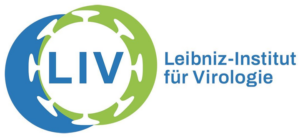
P09 - Jens Bosse
Control of HCMV transcription through compositional tuning of PML-nuclear bodies
- Phase separation
- Human Cytomegalovirus
- Live-cell imaging
- PML nuclear bodies
- Compositional control

Herpesviruses such as the human cytomegalovirus (HCMV) use the nucleus for genome transcription and replication. After entry, capsids dock on nuclear pores and inject their genomes into the cell nucleus. PML nuclear bodies (PML-NBs) are one of the most well-known antiviral organelles that interact with the viral genome. They consist of PML proteins as structural components and cellular proteins that can bind as clients through SUMO-SIM interactions. Previously it was believed that HCMV needs to dissolve PML-NBs for efficient transcription and replication. However, it appears that coevolution has resulted in a more complex relationship between host antiviral defenses and viral factors. New data suggest that HCMV degrades some PML-NB antiviral clients while reusing others as proviral factors to enable efficient early transcription and subsequent replication. While small SUMO and SUMO-interaction motifs (SIMs) play a role in recruiting proviral factors from PML-NBs to viral genomes, it is unclear how this specific redistribution is mechanistically mediated. Recently, it has been shown that PML-NBs show properties of phase-separated, liquid, membrane-less organelles with SUMO-SIM interactions as an organizational principle. PML proteins serve as the scaffold and the structural building blocks of PML-NBs to which proteins can bind as clients through SUMO-SIM interactions. Our preliminary data suggest that the HCMV protein UL112-113 forms liquid compartments at viral genomes, which are enriched with SUMO. We hypothesize that UL112-113 phase separation provides a viral scaffold that mimics the organizational principle of PML-NBs to which cellular proviral clients redistribute and promote viral transcription and replication. To test this hypothesis, we will use high-resolution, quantitative live-cell microscopy and measure the flux of proviral factors during HCMV infection at the single-particle level. Interfering mutants will give us a functional handle at the underlying mechanism. Live-cell imaging of transcription at individual viral genomes will allow us to measure the influence of client recruitment to viral genomes directly. In summary, this project will illuminate the mechanism of how HCMV exploits cellular PML nuclear body clients as proviral factors for efficient viral transcription and replication.
To answer these questions, we are applying multiple imaging-based, single-cell tools including live-cell lattice lightsheet microscopy, FRAP, FLIP as well as CLEM and combine them with quantitative image analysis.
This broad spectrum of techniques is only possible thanks to the close cooperation within DEEP-DV.




